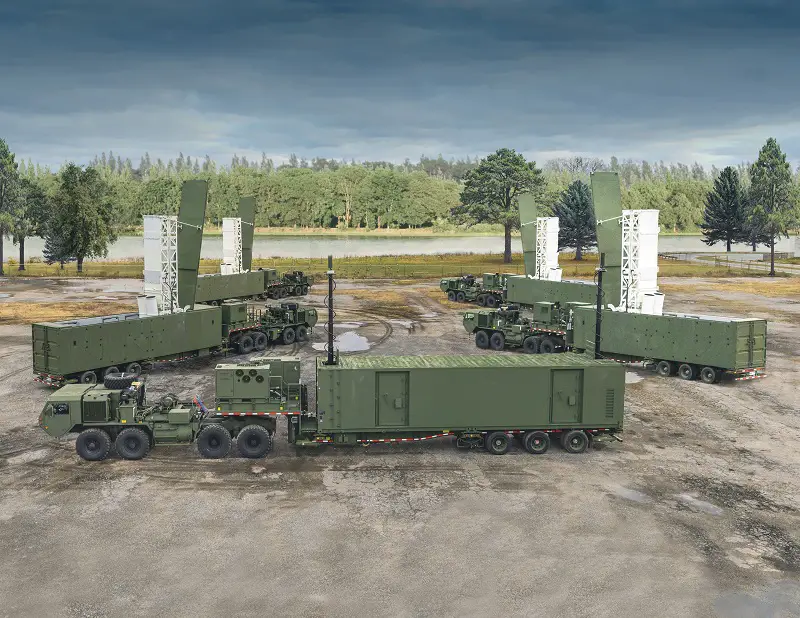The Armed Forces of the Philippines (AFP) is actively pursuing the procurement of the US-made Typhon mid-range capability (MRC) missile system. The Philippine Daily Inquirer reported that this move aligns with the Philippines’ ongoing shift towards bolstering its external defense capabilities. Speaking after the recent Mutual Defense Board-Security Engagement Board (MDB-SEB) meeting held at the Philippine Military Academy, Brawner highlighted the AFP’s focus on acquiring advanced weapons systems to enhance the nation’s defense posture. He emphasized that the acquisition of modern missile systems like the Typhon MRC is a critical component of this strategy. The AFP is already initiating preparations for potential MRC operations, with training programs being set up for military personnel in anticipation of the system’s acquisition. Part of AFP modernization efforts involves securing the latest weapons systems available, including those with mid-range capabilities.
The Typhon MRC has already made its presence felt in the Philippines. A unit of the system arrived in the country on April 11 and was subsequently observed in Ilocos Norte. The deployment of the MRC as part of the United States’ ongoing efforts to refine its multi-domain operations through constant experimentation. The potential acquisition of the Typhon MRC comes amid growing regional tensions. In July, Russian President Vladimir Putin announced plans to resume the production of intermediate- and shorter-range nuclear-capable missiles, citing the deployment of US missile systems like the MRC in the Philippines as a factor. As the Philippines continues to modernize its military capabilities, the potential acquisition of the Typhon MRC represents a significant step forward in strengthening the country’s defense posture amid a complex and evolving security environment. the establishment of a dedicated missile regiment within the Philippine Army to manage the supersonic cruise missile system, ensuring its effective maintenance and operational readines.

The Mid-Range Capability (MRC), or Typhon, is a U.S. Army transporter erector launcher for Standard SM-6 and Tomahawk missiles. Typhon was designed to strike targets beyond the range of the Army’s Precision Strike Missile, but shorter than the Long Range Hypersonic Weapon system using modified SM-6 and Tomahawk missiles. In April 2024, the Army operationally deployed Typhon batteries from the 1st MDTF to the Philippines. The battery deployed from Joint Base Lewis-McChord via a U.S. Air Force C-17 Globemaster to an unidentified airfield in Northern Luzon for the Salaknib 2024 joint military exercises. According to U.S. Army officials, from that position in Luzon, Typhon’s missiles could cover not only the entire Luzon Strait but also reach the Chinese coast and various People’s Liberation Army bases in the South China Sea. The system was not used in live-fire exercises, but Philippine troops were trained on how to handle and maintain the missile system. The system was also employed during the Balikatan 24 exercises.
Currently, the Philippines’ missile arsenal includes the BrahMos medium-range supersonic cruise missiles, capable of being launched from various platforms, including submarines, ships, aircraft, and land. The BrahMos is a joint venture between the Indian Defence Research and Development Organisation (DRDO) and the Russian Federation’s NPO Mashinostroyeniya, who together have formed BrahMos Aerospace. In 2021 December 31, BrahMos Aerospace Pvt Ltd’s representatives received the Notice of Award (NOA) for the project worth US$374,962,800. A contract was signed on 28 January 2022. It includes at least 3 batteries as part of the agreement. A battery will have at least 3 mobile firing units, plus attached command and control, radar, and support vehicles and units. Each mobile firing unit has 3 ready-to-fire BrahMos anti-ship supersonic missiles, with the export variant having a maximum range of around 290 kilometers. The batteries will be operated by the Shore-Based Anti-Ship Missile (SBASM) Battalion of the Philippine Marine Corps’ Coastal Defense Regiment. The BrahMos, which arrived in the Philippines earlier this year, boasts a range of 290 to 400 kilometers and can travel at speeds up to Mach 2.8.
















